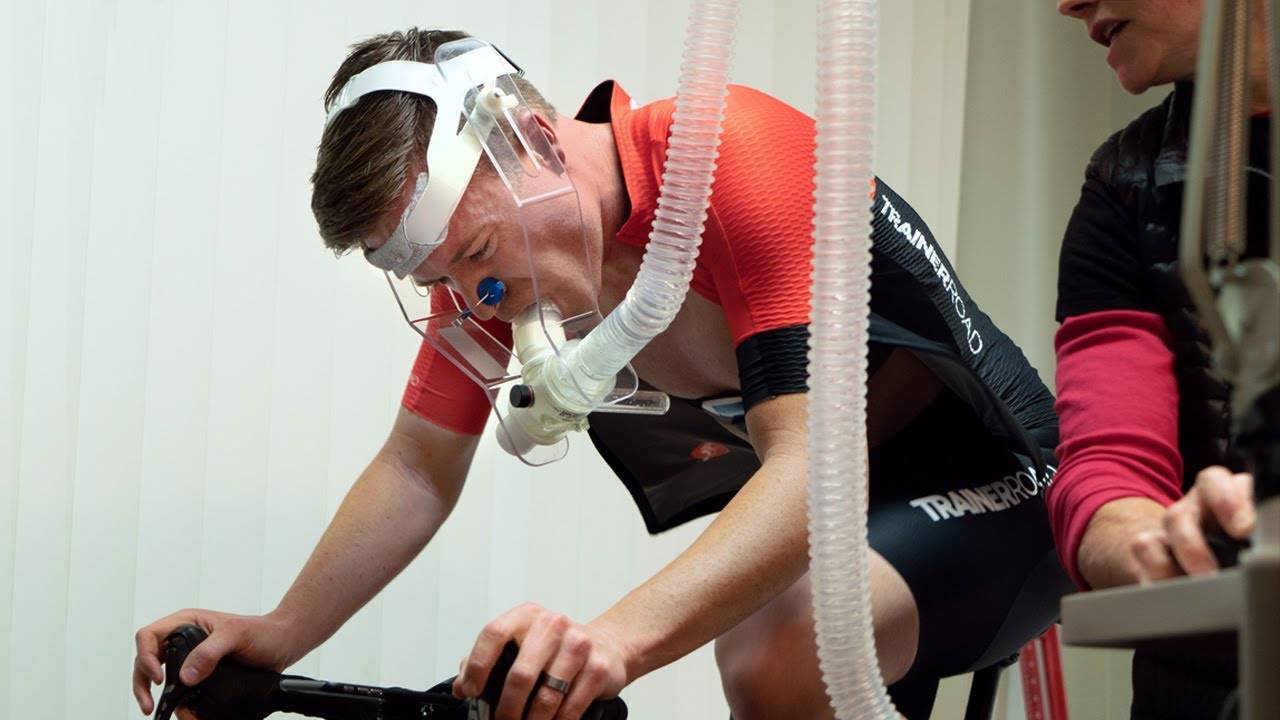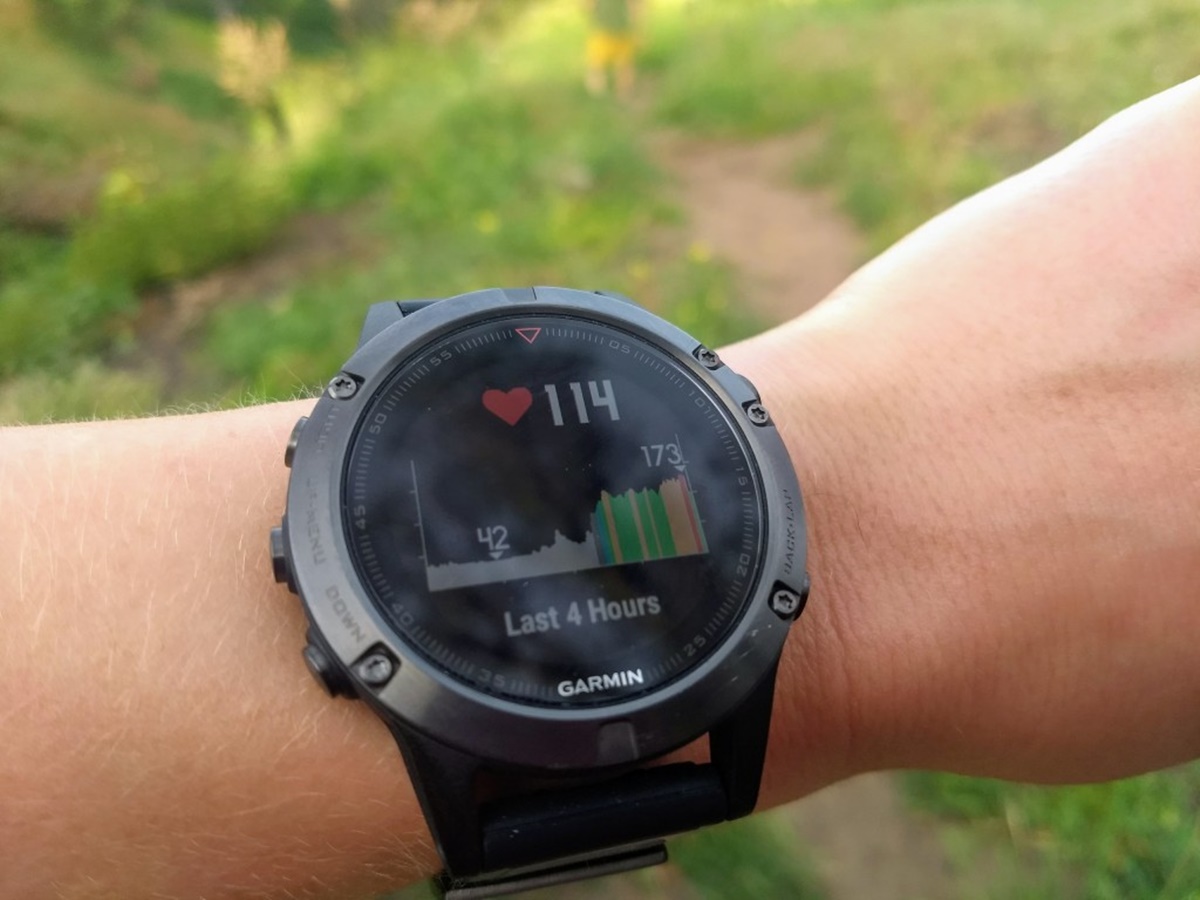Home>Misc>Featured>How Often Can You Do High Intensity Interval Training


Featured
How Often Can You Do High Intensity Interval Training
Modified: March 2, 2024
Discover the benefits of high-intensity interval training and learn how often you can incorporate this effective workout into your routine. Get featured on your fitness journey!
Introduction
Welcome to the world of High Intensity Interval Training (HIIT), a training method that has gained immense popularity in recent years. Whether you’re a beginner looking to kickstart your fitness journey or an experienced athlete aiming to take your performance to the next level, HIIT can offer a multitude of benefits. But how often should you incorporate it into your training routine?
Before we dive into the frequency of HIIT sessions, let’s first understand what HIIT is all about. HIIT is a form of cardiovascular exercise that involves short bursts of intense anaerobic exercises followed by brief recovery periods. These explosive and challenging intervals alternate between high and low intensities, pushing your body to its limits and effectively boosting your metabolism.
HIIT workouts can be adapted to various forms of exercise, including running, cycling, swimming, and bodyweight exercises. The intensity and duration of the bursts and recovery periods can be tailored to your fitness level and goals.
Now, let’s explore some of the key benefits of incorporating HIIT into your fitness routine.
What is High Intensity Interval Training (HIIT)?
High Intensity Interval Training, commonly known as HIIT, is a training technique that involves short bursts of intense exercise followed by periods of active recovery or complete rest. It is a time-efficient and effective way to improve cardiovascular fitness, build strength, and burn calories.
During a typical HIIT workout, you alternate between high-intensity exercises that push your body to its limits and periods of lower intensity or rest. The intense intervals typically last for 20-90 seconds, during which you give your maximum effort, followed by active recovery periods of 10-60 seconds, where you perform easier exercises or rest completely.
The key principle behind HIIT is that these short bursts of high-intensity exercise push your cardiovascular system to work harder than steady-state aerobic exercise. This leads to an increased heart rate, improved oxygen consumption, and a spike in the body’s metabolic rate, resulting in greater calorie burn, even after the workout is over.
HIIT workouts can be customized to suit different fitness levels and goals, making it accessible to individuals of all fitness backgrounds. Whether you’re a beginner or an advanced exerciser, HIIT can be adapted to challenge you and help you progress.
Another defining characteristic of HIIT is its versatility. It can be performed with a variety of exercises, including running, cycling, jumping jacks, burpees, and kettlebell swings, among others. This variety not only keeps the workouts engaging but also allows you to target different muscle groups and improve overall fitness.
Overall, HIIT is a popular training method that combines short, intense bursts of exercise with periods of recovery or rest. Its effectiveness lies in its ability to maximize calorie burn, improve cardiovascular fitness, and build both strength and endurance.
Benefits of High Intensity Interval Training
High Intensity Interval Training (HIIT) offers a wide range of benefits that make it a highly popular and efficient form of exercise. Let’s dive into some of the key advantages of incorporating HIIT into your fitness routine.
- Time Efficiency: One of the major benefits of HIIT is its time efficiency. HIIT workouts are typically shorter in duration compared to traditional steady-state cardio exercises. Due to the intense nature of the intervals, you can achieve the same or even better results in less time.
- Increased Calorie Burn: HIIT is great for burning calories. The high-intensity intervals push your body to work at maximum capacity, increasing your metabolism and calorie burn not only during the workout but also up to 24 hours after the session. This makes HIIT an effective tool for weight loss and fat burning.
- Improved Cardiovascular Fitness: By pushing your heart rate to its max during the intense intervals of HIIT, you improve your cardiovascular fitness. HIIT enhances your heart’s ability to pump blood efficiently, increases oxygen uptake, and improves lung function.
- Muscle Tone and Strength: HIIT workouts not only burn fat but also help build lean muscle. The high-intensity exercises engage multiple muscle groups simultaneously, leading to improved muscle tone, strength, and overall body composition.
- Flexibility and Adaptability: HIIT workouts can be tailored to suit your fitness level and preferences. You can easily modify the intensity, duration, and exercises to match your specific goals. This flexibility makes HIIT accessible to individuals of all fitness backgrounds.
- Metabolic Health: HIIT has been shown to improve metabolic health by increasing insulin sensitivity and reducing the risk of chronic diseases such as type 2 diabetes and heart disease. The intense intervals stimulate the production of hormones that enhance fat metabolism and regulate blood sugar levels.
These are just a few of the many benefits that HIIT offers. Whether your goal is to lose weight, improve cardiovascular fitness, or increase strength, incorporating HIIT into your routine can help you achieve remarkable results in a shorter amount of time.
Factors to Consider Before Starting HIIT
High Intensity Interval Training (HIIT) can be an effective and rewarding form of exercise, but it’s important to consider a few factors before incorporating it into your fitness routine. Here are some key considerations to keep in mind:
- Current Fitness Level: HIIT is intense and challenging, so it’s important to assess your current fitness level. If you’re a beginner or have been inactive for a while, it’s advisable to start with lower intensity workouts and gradually increase the intensity and duration over time.
- Health Conditions and Injuries: If you have any pre-existing health conditions or injuries, it’s crucial to consult with a healthcare professional or a qualified fitness trainer before starting HIIT. They can evaluate your condition and recommend modifications or alternative exercises to ensure your safety.
- Proper Form and Technique: HIIT exercises often involve complex movements and high impact. It’s essential to learn and maintain proper form and technique to prevent injuries. Consider working with a certified fitness professional who can guide you in performing exercises correctly and safely.
- Recovery and Rest: HIIT places significant stress on your body. Adequate rest and recovery are crucial to prevent overtraining and allow your muscles to repair and grow. Ensure you schedule rest days between HIIT sessions and listen to your body’s signals for rest and recovery.
- Warm-up and Cool-down: Before diving into an intense HIIT workout, it’s important to warm up your muscles and prepare your body for the exertion. Incorporate dynamic stretching, mobility exercises, and light cardio to warm up. Similarly, include a cool-down routine that includes static stretching to promote flexibility and aid in muscle recovery.
- Nutrition and Hydration: Fueling your body with appropriate nutrition and staying hydrated are essential for optimal performance during HIIT. Ensure you’re consuming a balanced diet with adequate protein, carbohydrates, and healthy fats. Hydrate before, during, and after your workouts to prevent dehydration and maximize performance.
Considering these factors will help you approach HIIT in a safe and effective manner. It’s crucial to prioritize your health, listen to your body, and make gradual progressions to avoid potential injuries or setbacks.
How often should you do High Intensity Interval Training?
The frequency at which you should incorporate High Intensity Interval Training (HIIT) into your fitness routine depends on various factors, including your fitness goals, current fitness level, and recovery capacity. Let’s explore some general recommendations to help you determine how often to do HIIT:
1. Beginner Level: If you’re new to HIIT or haven’t been exercising regularly, it’s advisable to start with 1-2 HIIT sessions per week. This allows your body to adapt to the intensity and helps prevent excessive soreness and fatigue.
2. Intermediate Level: As you progress and become more comfortable with HIIT, you can gradually increase the frequency to 3-4 sessions per week. This level of frequency provides a good balance between challenging your body and allowing sufficient recovery time.
3. Advanced Level: Advanced individuals who have been consistently doing HIIT for an extended period may be able to handle 4-5 sessions per week. However, it’s important to listen to your body and adjust the frequency based on your recovery capacity. If you notice signs of overtraining, such as persistent fatigue or lack of progress, consider reducing the frequency.
Remember, the quality of your HIIT workouts is as important as the quantity. It’s better to perform a few high-quality sessions with proper form and intensity rather than pushing yourself to do too many workouts with compromised effort.
In addition to frequency, it’s important to consider the duration of each HIIT session. Ideally, a HIIT workout should last between 20-30 minutes, including warm-up and cool-down periods. This ensures that you’re working at a high intensity throughout the session without risking excessive fatigue or burnout.
Lastly, it’s crucial to prioritize adequate rest and recovery between HIIT sessions. Your body needs time to repair and rebuild after the intense workouts. Aim to have at least 48 hours of recovery between HIIT sessions, allowing your muscles and central nervous system to fully recover and adapt.
Keep in mind that these recommendations are general guidelines, and individual needs may vary. It’s always beneficial to consult with a fitness professional who can assess your specific goals and help design a HIIT program tailored to your needs.
Recommendations for Beginners
If you’re new to High Intensity Interval Training (HIIT), it’s important to approach it with caution and gradually build your fitness level. Here are some recommendations to help beginners get started with HIIT:
1. Consult with a Professional: Before starting any new exercise program, it’s advisable to consult with a certified fitness professional. They can assess your fitness level, provide guidance on proper form and technique, and help design a HIIT program that suits your goals and abilities.
2. Start Slowly: If you’re new to HIIT or haven’t been exercising regularly, it’s important to start slowly and gradually increase the intensity and duration of your workouts. Begin with shorter intervals and longer rest periods, gradually progressing to higher intensity intervals as your fitness improves.
3. Incorporate Longer Rest Periods: As a beginner, your body will need more time to recover between high-intensity intervals. Aim for longer rest periods, around 1-2 minutes, to ensure you can fully recover and maintain proper form and intensity throughout the workout.
4. Focus on Form: Proper form and technique are crucial to prevent injuries and maximize the effectiveness of your workouts. Concentrate on mastering the correct form for each exercise before increasing the intensity. If you’re unsure about proper form, consider working with a fitness professional who can guide you.
5. Listen to Your Body: It’s important to listen to your body and respect its limits. If you experience any pain, dizziness, or excessive fatigue, stop the workout and allow yourself to recover. Pushing through pain or discomfort can lead to injuries and setbacks.
6. Gradually Increase Frequency: Start with 1-2 HIIT sessions per week and gradually increase the frequency as your body adapts. Consistency is key, but it’s important not to overdo it. Give your body time to recover and adjust to the demands of HIIT.
7. Warm-up and Cool-down: Prioritize proper warm-up and cool-down routines. Perform dynamic stretches and light cardio exercises to warm up your muscles and prepare your body for the HIIT session. After the workout, focus on static stretches to promote flexibility and aid in muscle recovery.
8. Modify Exercises: If you find certain exercises too challenging or uncomfortable, don’t hesitate to modify them. For example, instead of performing burpees, you can start with modified versions like step-back burpees or squat jumps. As you gain strength and confidence, you can progress to more advanced variations.
By following these recommendations, beginners can safely and effectively incorporate HIIT into their fitness routine. Remember to progress at your own pace, prioritize proper form, and listen to your body’s signals for rest and recovery.
Recommendations for Intermediate and Advanced Individuals
If you’ve been consistently practicing High Intensity Interval Training (HIIT) and have built a solid fitness foundation, you can take your workouts to the next level with these recommendations:
1. Increase Intensity: As an intermediate or advanced individual, you can challenge yourself by increasing the intensity of your HIIT workouts. This can be done by shortening the rest periods, increasing the number of high-intensity intervals, or incorporating more challenging exercises that require more strength and power.
2. Experiment with Different Formats: Don’t be afraid to try different HIIT formats to keep your workouts exciting and challenging. Tabata, EMOM (Every Minute on the Minute), and AMRAP (As Many Rounds As Possible) are just a few examples of workout formats that can push your limits and enhance your endurance.
3. Explore Advanced Exercises: As you progress, you can incorporate more advanced exercises into your HIIT workouts. Exercises like plyometric jumps, handstand push-ups, and weighted squats can add an extra layer of intensity and variety to your routine. Always prioritize safety and proper form when attempting advanced exercises.
4. Implement Circuit Training: Circuit training involves performing a series of exercises back-to-back with minimal rest in between. This can further increase the intensity and challenge of your workouts. Design circuit workouts that target different muscle groups to achieve a well-rounded full-body workout.
5. Incorporate Equipment: If you have access to equipment, consider incorporating it into your HIIT workouts. Kettlebells, resistance bands, medicine balls, and battle ropes are just a few examples of equipment that can add resistance and variability to your exercises, thereby increasing the intensity and effectiveness of your workouts.
6. Periodize Your Training: Implement a periodization approach to your HIIT training. This involves dividing your training into specific periods, such as a strength phase followed by a conditioning phase. This helps prevent plateaus, promotes progression, and allows for proper recovery between phases.
7. Monitor and Adjust: Pay attention to your performance and progress. Keep track of metrics like workout duration, number of intervals, and intensity levels. Regularly evaluate your performance and make adjustments to your HIIT program as needed. This may involve increasing or decreasing the frequency, adjusting rest periods, or modifying exercise selection.
8. Incorporate Active Recovery: As an intermediate or advanced individual, active recovery becomes even more important. Engage in low-intensity activities such as walking, swimming, or cycling on your rest days to promote blood flow, enhance recovery, and prevent muscle imbalances.
Remember, progression and continued challenge are key at this stage. Push yourself outside of your comfort zone while still prioritizing proper form, adequate rest, and recovery. Consulting with a fitness professional can provide valuable guidance in designing a personalized HIIT program suited to your goals and abilities.
Recovery and Rest Days
Recovery and rest are essential components of any training program, including High Intensity Interval Training (HIIT). Here’s why you should prioritize recovery and incorporate regular rest days into your HIIT routine:
1. Muscle Repair and Growth: During HIIT workouts, your muscles experience micro-tears, which need time to repair and rebuild. Rest days allow this process to happen, leading to stronger and more resilient muscles. Adequate rest is crucial for muscle growth and preventing overtraining.
2. Injury Prevention: Overtraining or neglecting rest days can increase the risk of injury. Fatigued muscles and joints are more prone to strains, sprains, and other overuse injuries. Rest days give your body time to recover and reduce the likelihood of injuries associated with continuous intense exercise.
3. Central Nervous System (CNS) Recovery: HIIT workouts tax not only your muscles but also your central nervous system. Your CNS plays a vital role in coordinating muscle contractions and maintaining optimal performance. Rest days allow your CNS to recover from the intense demands of HIIT, improving overall performance and reducing the risk of burnout.
4. Energy Restoration: HIIT sessions can be mentally and physically taxing, depleting your energy stores. Rest days replenish your energy reserves, allowing you to perform at your best during future workouts. This enhanced energy availability translates to improved intensity, form, and overall workout quality.
5. Hormonal Balance: Intense exercise like HIIT can elevate stress hormones such as cortisol. Prolonged elevation of cortisol levels can hinder recovery and lead to negative health effects. Rest days help restore hormonal balance, allowing your body to regulate stress hormone levels and maintain overall well-being.
6. Mental and Emotional Well-being: Rest days give you time to focus on self-care and recharge both mentally and emotionally. Incorporating rest days allows for a better balance between exercise and other aspects of life, reducing the risk of burnout and promoting a healthy relationship with exercise.
7. Active Recovery: On rest days, you can engage in active recovery activities such as gentle stretching, yoga, walking, or low-intensity exercise. These activities promote blood flow, help reduce muscle soreness, and enhance overall recovery without placing excessive stress on your body.
8. Listen to Your Body: Remember to listen to your body and be mindful of any signs of overtraining or excessive fatigue. If you’re experiencing persistent muscle soreness, lack of motivation, decreased performance, or difficulty sleeping, it may be an indication that you need additional rest or recovery time.
Incorporating regular rest days and prioritizing recovery is essential for long-term progress, injury prevention, and overall well-being. Strike a balance between HIIT sessions and rest days to optimize your performance and achieve sustainable results.
Monitoring Intensity and Progression
Monitoring intensity and progression is crucial when incorporating High Intensity Interval Training (HIIT) into your fitness routine. By keeping track of your workouts and making appropriate adjustments, you can ensure continued progress and avoid plateaus. Here are some strategies to help you monitor intensity and track your progression in HIIT:
1. Perceived Exertion: Use the Borg Rating of Perceived Exertion (RPE) scale to gauge your effort during HIIT workouts. This scale ranges from 1 to 10, with 1 being very light and 10 being maximum effort. Pay attention to how hard you feel you are working during each interval, aiming for a level of 7 to 9 on the RPE scale for the high-intensity intervals.
2. Heart Rate Monitoring: Monitor your heart rate during HIIT workouts by using a heart rate monitor or a fitness tracker with heart rate tracking capabilities. Different target heart rate zones can be used to guide the intensity of your intervals. For example, aim for a heart rate between 80-90% of your maximum heart rate during the high-intensity intervals.
3. Track Work-to-Rest Ratios: Keep a record of the work-to-rest ratios you use during your HIIT workouts. For example, if you perform 30 seconds of high-intensity exercise followed by 30 seconds of rest, note the ratio and compare it over time. Gradually reducing the rest periods or increasing the work intervals can indicate progression and improved fitness.
4. Record Workout Duration and Intensity: Note the duration of each HIIT session and the level of intensity you maintained. Recording these variables will allow you to track changes over time and ensure consistent improvement.
5. Repetitions or Rounds Completed: If your HIIT workout involves completing a certain number of repetitions or rounds, track how many you accomplish in each session. Increasing the number of repetitions or rounds completed indicates progression and improved endurance.
6. Use a Timer or HIIT App: Utilize a timer or HIIT app to ensure accurate timing of your intervals and rest periods. This will help maintain consistency and allow for proper progression as you increase the number of intervals or decrease the rest periods over time.
7. Track Resting Heart Rate and Recovery: Monitoring your resting heart rate and how quickly it returns to baseline after HIIT workouts can provide insights into your cardiovascular fitness and recovery. As your fitness improves, you may notice a reduction in resting heart rate and a faster recovery time.
8. Regularly Assess Fitness and Set Goals: Perform periodic fitness assessments such as timed runs, maximum repetitions, or maximum distance covered. Regularly setting goals and measuring progress will help you stay motivated and ensure continued improvement in your HIIT workouts.
By monitoring intensity and progression, you can make informed adjustments to your HIIT workouts, ensuring that you’re continually challenging yourself and reaping the benefits of this effective training method.
Conclusion
High Intensity Interval Training (HIIT) is a powerful and efficient training method that offers numerous benefits, including improved cardiovascular fitness, increased calorie burn, enhanced muscle tone, and greater metabolic health. When incorporating HIIT into your fitness routine, it’s important to consider factors such as your fitness level, goals, and recovery capacity.
For beginners, starting slowly, focusing on proper form, and gradually increasing the frequency and intensity of HIIT workouts is key. Intermediate and advanced individuals can challenge themselves by increasing intensity, exploring different formats, and incorporating advanced exercises into their routines.
Recovery and rest days are vital for muscle repair, injury prevention, and overall well-being. They allow your body to recharge, restore energy, and maintain hormonal balance. Active recovery activities can promote blood flow and aid in muscle recovery without putting excessive stress on your body.
Monitoring intensity and progression is essential to ensure continued progress and prevent plateaus. Using tools like the Borg RPE scale, heart rate monitoring, and tracking work-to-rest ratios can help you gauge your effort and make appropriate adjustments to your HIIT workouts.
Incorporating HIIT into your fitness routine can provide remarkable results when done with proper technique, consistency, and consideration for your individual needs. Remember that everyone’s fitness journey is unique, so listen to your body, make gradual progressions, and seek guidance from a fitness professional if needed.
So, whether you’re a beginner looking to kickstart your fitness journey or an experienced individual seeking new challenges, HIIT can be a powerful tool to help you achieve your fitness goals and take your performance to the next level.









